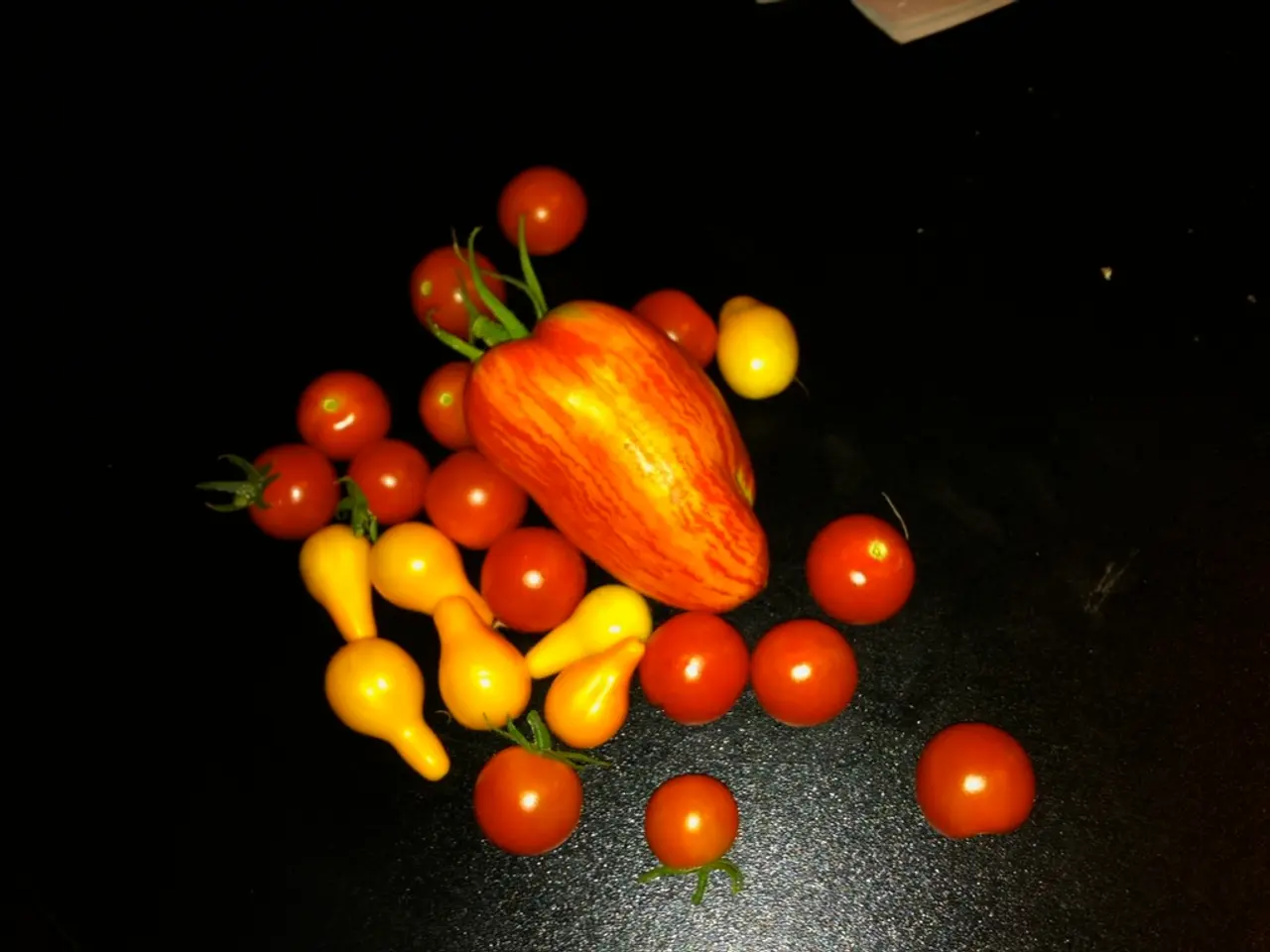DIY Fruit Snacks: Swap Store-Bought Junk with a Wholesome Home Version
Making Homemade Fruit Snacks: A Healthier Alternative to Store-Bought
Homemade fruit snacks have gained popularity in the UK and Ireland as people seek to return to more natural eating habits while still satisfying their sweet cravings. This article will guide you through the process of making your own fruit snacks and discuss the benefits of doing so.
The Process
Making homemade fruit snacks involves pureeing fruits and vegetables, blooming gelatine, and heating the mixture. For a striking visual effect, try creating layered fruit snacks by preparing different coloured mixtures and pouring the first layer into your moulds. Allow it to partially set in the refrigerator for about 15-20 minutes until just firm to the touch but still slightly tacky. Then pour the second layer on top and refrigerate until completely set.
Tips and Tricks
- Allow sufficient time for your fruit snacks to set completely. Rushing this process can result in too-soft gummies. Overnight refrigeration often yields the best texture.
- Highly acidic fruits like citrus can prevent gelatine from setting properly. To counter this, you may need to increase the amount of gelatine slightly or balance acidic juices with sweeter options like apple or grape juice.
- When making fruit and vegetable pureés, ensure they're as smooth as possible before straining. A high-powered blender works best, but if you don't have one, blend for longer and add a little extra liquid to achieve a smooth consistency.
Ingredients
The recipe provided for basic homemade fruit snacks includes 350ml of 100% fruit juice, 6 sheets of gelatine, 2 tablespoons of honey, and optional citric acid. For a vegetable-infused version, try incorporating 200g of fresh or frozen berries, 50g of fresh spinach, kale, or cucumber, 100ml of apple juice or white grape juice, 6 sheets of gelatine, 2-3 tablespoons of honey, and 1/2 teaspoon of lemon juice.
Benefits of Homemade Fruit Snacks
Homemade fruit snacks have several health advantages over store-bought versions, mainly because they allow control over ingredients and avoid additives commonly found in commercial snacks.
- Control over ingredients: Homemade recipes let you use fresh, whole fruits and natural sweeteners like honey, avoiding refined sugars and artificial additives, dyes, or preservatives often present in store-bought snacks.
- Lower added sugar: Many commercial fruit snacks are high in refined sugars, which may amount to several teaspoons per serving, contributing to excess calorie intake without nutritional benefits. Homemade versions can minimize or eliminate refined sugars, focusing on the natural sweetness of fruit.
- Nutrient preservation: Fresh fruits used in homemade snacks retain more vitamins, minerals, and antioxidants compared to processed dried fruit snacks or fruit leathers that may undergo heat treatments or added preservatives.
- Fiber content: Dried fruits (common in store-bought snacks) are high in fiber and potassium, supporting digestion and heart health, but homemade fruit snacks made from pureed whole fruits can also deliver fiber depending on preparation.
- No mystery additives: Store-bought snacks may contain “mystery” ingredients such as artificial flavors, coloring, or gelatin from uncertain sources, whereas homemade recipes can use clean-label ingredients like grass-fed gelatin or plant-based alternatives.
Vegan Alternatives
For a vegan alternative to gelatine, agar agar is a fantastic option. Agar agar, derived from seaweed, works as a perfect gelling agent and is suitable for vegans. It has the same gelling properties as gelatine but comes from a plant-based source.
Storing Homemade Fruit Snacks
Homemade fruit snacks don't contain the preservatives found in commercial versions, so proper storage is essential. Keep them in an airtight container in the refrigerator, where they'll stay fresh for 1-2 weeks. If you want to store them for longer, you can freeze them for up to three months.
Experimenting with Flavours
For an adult version with sophisticated flavours, try incorporating herbal infusions into your fruit snacks. British favourites like Earl Grey tea, elderflower cordial, or even gin botanicals can add complex flavours that pair beautifully with fruit bases.
With these tips and recipes, you're now equipped to start making your own homemade fruit snacks. Enjoy the process of creating nutritious and delicious snacks tailored to your tastes!
- To achieve the best texture in your homemade fruit snacks, allow them to set completely through overnight refrigeration.
- Highly acidic fruits like citrus can prevent gelatine from setting properly; increasing the amount of gelatine slightly or balancing acidic juices with sweeter options can help overcome this issue.
- For a striking visual effect, create layered fruit snacks by preparing different coloured mixtures and pouring the first layer into your moulds.
- Incorporating plant-based alternatives like agar agar can provide a vegan option for gelatine in fruit snack recipes.
- Fresh fruits used in homemade fruit snacks retain more vitamins, minerals, and antioxidants compared to processed dried fruit snacks.
- To cater to health-and-wellness preferences and a food-and-drink lifestyle, experiment with herbal infusions like Earl Grey tea or elderflower cordial in adult versions of homemade fruit snacks.




